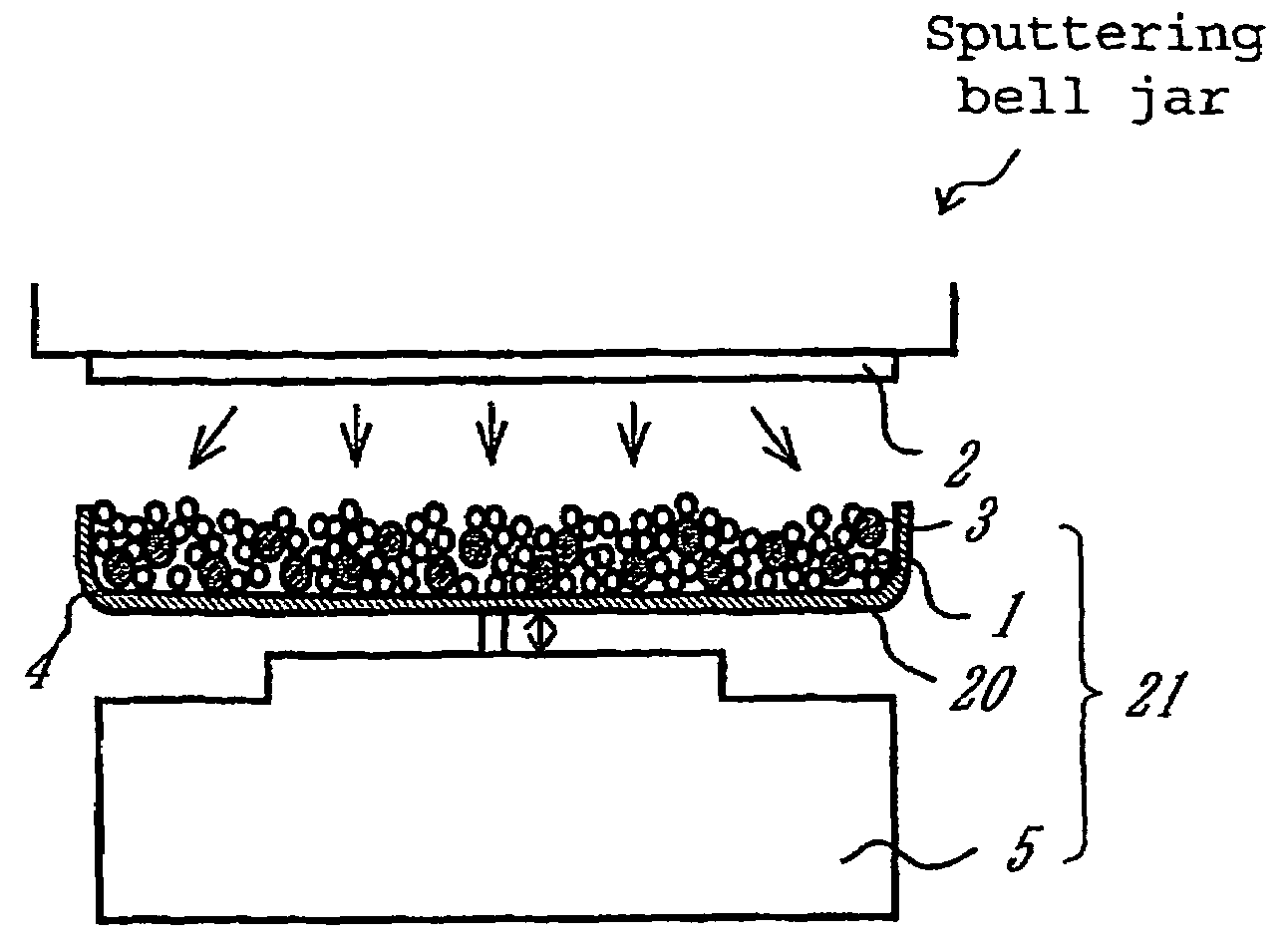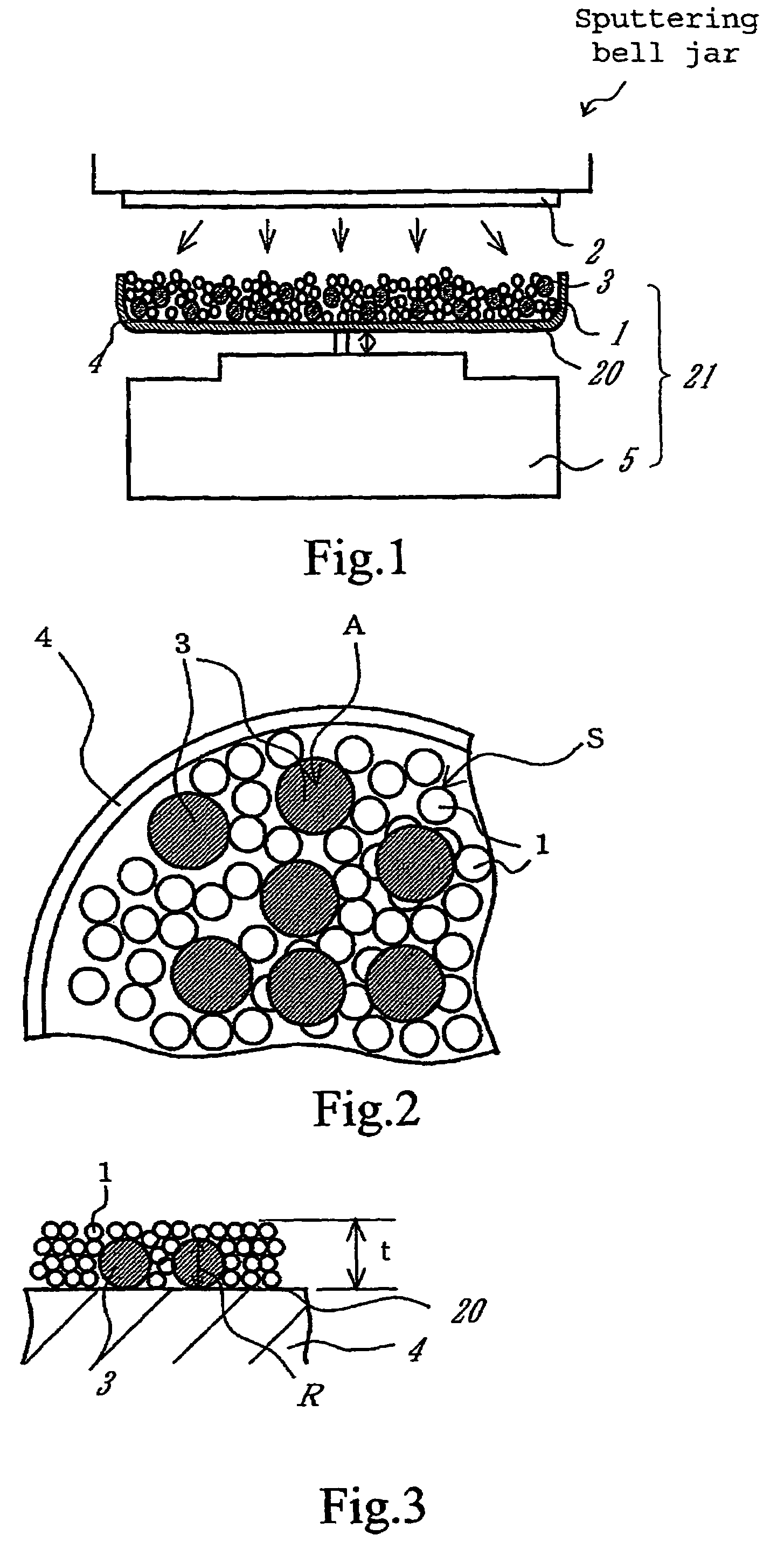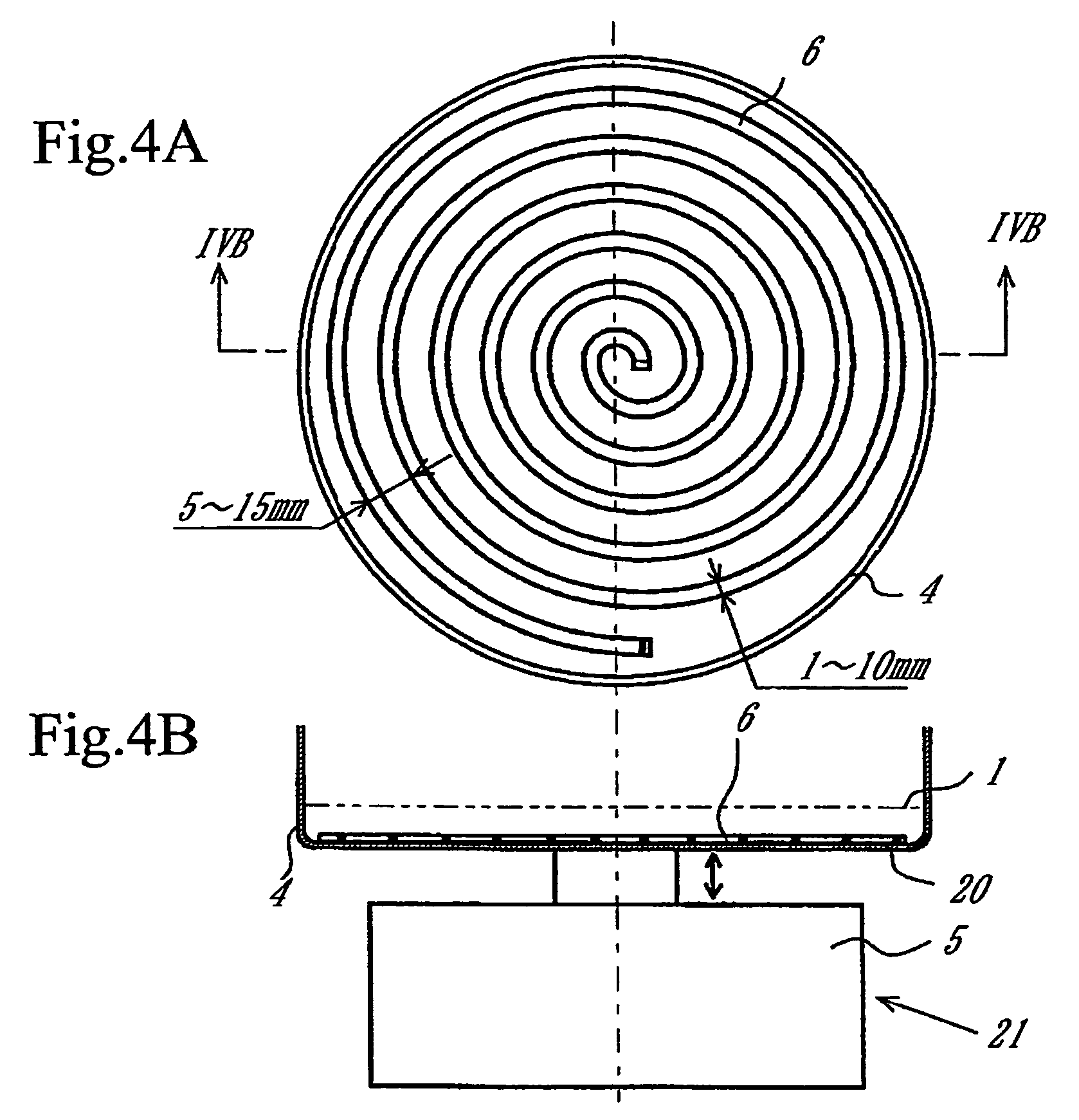Process for production of conductive catalyst particles, process for production of catalyst electrode capable of gas diffusion, apparatus for production of conductive catalyst particles, and vibrating apparatus
a technology of catalyst particles and catalyst electrodes, which is applied in the direction of physical/chemical process catalysts, cell components, sustainable manufacturing/processing, etc., can solve the problems of requiring steps for reduction and thermal treatment, poor crystallinity, and mediocre catalytic characteristics, and achieve enhanced catalytic capability, good crystallinity, and good catalytic action.
- Summary
- Abstract
- Description
- Claims
- Application Information
AI Technical Summary
Benefits of technology
Problems solved by technology
Method used
Image
Examples
example 1
[0100]An apparatus shown in FIG. 1 was assembled from a sputtering target, a vibrator, and a container. The container was charged with a conductive powder and balls. The sputtering target is a platinum disc 100 mm in diameter. The balls are stainless steel balls 3 mm in diameter. The conductive powder is a carbon powder having a specific surface area of 800 m2 / g and an oil absorption value of 360 mL / 100 g. The vibrator generates vibration with an amplitude of ±5 mm and a frequency of 36 Hz.
[0101]The container was charged with the carbon powder (1 g) and the stainless steel balls (35 g). Sputtering was carried out for 30 minutes while the carbon powder and stainless steel balls were being vibrated by the vibrator, with the vacuum chamber supplied with argon (1 Pa) and the target activated by 400W RF. After sputtering, it was found that the carbon powder increased in weight to 1.66 g owing to deposition of platinum (0.66 g) thereon. This implies that the treated carbon powder carries ...
example 2
[0104]An apparatus as shown in FIGS. 4A and 4B was assembled from a sputtering target, a vibrator, a container, and a device made of spirally wound wire. The wire is a stainless steel wire 1.6 mm in diameter. The wire is wound at a pitch of about 5 mm to about 10 mm. The outside diameter of the spiral is smaller by about 5 mm than the inside diameter of the container. The conductive powder (carbon powder) mentioned above was placed on the device of spirally wound wire. Being not fixed to the bottom of the container, this device vibrated together with the carbon powder during sputtering to coat the carbon powder with platinum.
[0105]A fuel cell as shown in FIG. 7 was made in the same way as in Example 1 except that the carbon powder was coated with platinum by using the apparatus mentioned above. The obtained fuel cell was tested for output. The output was 120% of that in Example 1.
example 3
[0106]A fuel cell shown in FIG. 7 was made in the same way as in Example 1 except that the carbon powder (which carries platinum) was replaced by the one which has an oil absorption value of 150 mL / 100 g. The obtained fuel cell was tested for output. The output was 65% of that in Example 1.
PUM
| Property | Measurement | Unit |
|---|---|---|
| diameter | aaaaa | aaaaa |
| frequency | aaaaa | aaaaa |
| specific surface area | aaaaa | aaaaa |
Abstract
Description
Claims
Application Information
 Login to View More
Login to View More - Generate Ideas
- Intellectual Property
- Life Sciences
- Materials
- Tech Scout
- Unparalleled Data Quality
- Higher Quality Content
- 60% Fewer Hallucinations
Browse by: Latest US Patents, China's latest patents, Technical Efficacy Thesaurus, Application Domain, Technology Topic, Popular Technical Reports.
© 2025 PatSnap. All rights reserved.Legal|Privacy policy|Modern Slavery Act Transparency Statement|Sitemap|About US| Contact US: help@patsnap.com



